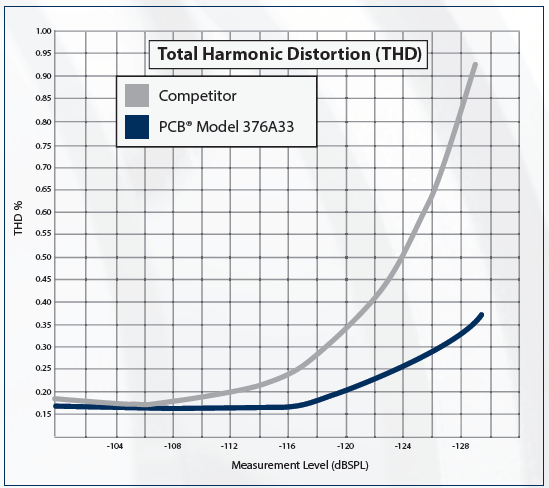Why is it important to have a high 1% Total Harmonic Distortion (THD) capability for microphones?
Total Harmonic Distortion (THD) is displayed in a percentage under a specified frequency range and voltage. It represents a deviation of the output signal comprised of the fundamental frequency and its harmonic frequencies. The higher the level, the more distortion is represented in the signal. The lower the level of THD, the more accurate the signal is displayed and more natural instruments can be heard.
While research and development engineers for the test and measurement industry standardized on a 3% distortion value, the audio market standardizes on a more stringent 1% THD value. IEC 61094-4 working class standard test and measurement microphones manufactured by PCB use a special confidential alloy steel diaphragm design, which offers significant advantages over lower quality electret metal, or plastic diaphragm designs.
If using a microphone to measure the noise, or the 1% THD (distortion) value of a speaker, headphone, or instrument, and the microphone has inherently a high level of distortion, the design engineer for the speaker or instrument will not be able to accurately confirm if the distortion stems from the product they are developing or the instrument (microphone) used to measure that specific product.
The ability for a microphone to go to higher sound pressure levels (SPL’s) with low distortion values, allows a movie film maker to capture bomb blasts more realistically, without the output (sine wave) clipping, or the microphone overloading and distorting. The high amplitude signal of a loud snare drum, or kick drum can be represented more naturally with a measurement instrument that can accept higher amplitudes (sound pressure levels) with minimal THD.
PCB prides itself in offering premium lab grade microphones with low total harmonic distortion for the audio market place, allowing research and design engineers to create higher quality products.

| 1% Distortion
|
| PCB 377A06
|
Competitor's Microphone
|
| 150 dB
|
130 dB
|